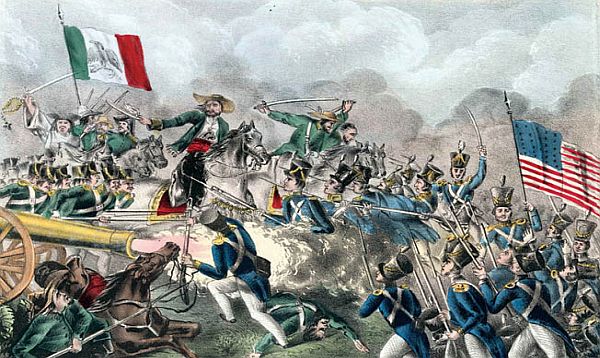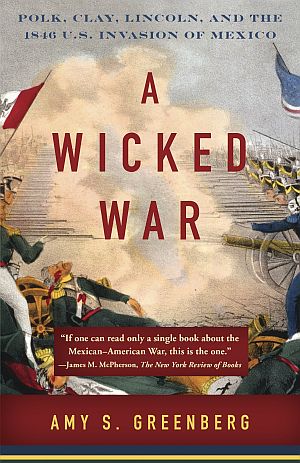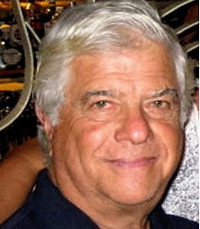
Sayulita, Mexico – Living in Mexico half the year has motivated me to learn more about the history of the often-contentious relationship between Mexico and the United States. The current problems we have on the Mexican border further inspired my research.
By coincidence, flying back from Mexico to the United States recently, I was searching my Kindle and found a book that seemed to fit my interest perfectly: “A Wicked War: Clay, Lincoln and the 1846 Invasion of Mexico,” written by Amy S. Greenberg five years ago.
I was shocked by what I read. False starts, false allegations, lies, atrocities, disillusionment, depravations and divisiveness, all fueled by manifest destiny – the almost religious belief that it was both justified and inevitable that the United States, by any means, come to own all of the territory between the Atlantic and Pacific Oceans.
General Ulysses S. Grant, fighting in this war as a young army lieutenant, called it “wicked” and “the most unjust war ever waged.” Grant felt the ensuing Civil War was God’s punishment for that sin. Abraham Lincoln called James K. Polk, who was president at the time of the war, a liar and called down God’s wrath on Polk’s head.
So how did this wicked war come to pass? The Spanish first colonized the states that now make up the southwest portion of the United States. Spain allowed some Americans to settle in what is known as Texas. Mexico broke away from Spain in 1821. By 1835, there were about 20,000 American and European settlers there, as well as slaves. (The Mexican government had tried in vain to limit this influx.)
That year, fighting broke out between the American colonists and the Mexican Army because Mexico wanted to limit the practice of slavery. The next year, the colonists declared Texas an independent state. After a decisive victory at the Battle of San Jacinto, fighting stopped. But Mexico never recognized this new, rogue state.

Mexico warned the United States that it would go to war if it tried to make Texas a state. The president at the time, Martin van Buren, took the threat seriously, but by 1844, President John Tyler began negotiations with the Republic of Texas that led to the Treaty of Annexation. This infuriated Mexico, which severed diplomatic relations with the United States, but the treaty lacked votes in the Senate and was soundly defeated. Before he left office, Tyler tried again to get the treaty ratified and, with the help of President-elect James Polk, the treaty was passed and Texas became a state on December 29.
Mexico, wisely, did not declare war, but tensions between the two countries grew due to a hotly contested dispute over where the border should be. In 1846, Polk, an ardent expansionist, sent Congressman John Sidell to discuss a purchase of the disputed areas, as well as the present-day states of Nevada and California. The mission failed. Some minor fighting broke out, giving the United States an excuse to declare war on Mexico on May 13, 1846. In so doing, a republic invaded another republic with little justification.
The Mexicans were out-manned, out-gunned and out-trained, and lost every battle. The war’s most daring maneuver came when American forces under General Winfield Scott landed 10,000 men at the port of Veracruz on March 19, 1847, without the loss of one life and marched on to capture Mexico City.
Although we won the war, the ensuing peace treaty of Guadalupe Hidalgo was fraught with great controversy. Polk’s representative, Nicholas P. Trist, was the lead diplomat for the peace talks, but Polk got wind that Trist was going to be too lenient with Mexico and recalled him. Trist refused to be recalled and began peace talks in earnest.
Finally, the peace treaty was approved – much to the benefit of the United States – but when Trist returned to Washington, he was promptly fired by an angry Polk who cut off all of his pay and much-deserved recognition. Trist lived a long time in poverty before his salary was reinstated.
Our victory came at a terrible price: one of the highest casualty rates of any war fought by the United States. Of 80,000 soldiers, 13,200 died – a mortality rate of 17 percent, more than that of World Wars I and II. Most died not from bullets, but from dysentery, yellow fever, malaria and smallpox. The Mexican dead tallied at over 25,000, many lost to atrocities committed by our volunteer troops – burning villages, raping, scalping and torturing in revenge for previous wrongs committed by Mexican troops.
So although the war’s conclusion seemed like a great win for the United States, in reality the acquisition of so much territory, all at once, with the slavery issue still hotly contested, started the slow but inevitable fuse that ignited the Civil War in 1861.A person of great note against slavery in the new territory was Representative Abraham Lincoln from Illinois. Henry Clay likely lost his bid for presidency by being vocal against the war. Key players on the political side included Jefferson Davis and Stephen Douglas. On the battlefields, Robert E. Lee, Ulysses S. Grant and Stonewall Jackson were among the dozens of commanders who would later emerge as leaders in the Civil War. Winfield Scott – who was nicknamed “old fuss and feathers” – was likely the ablest of the generals.
It was a wicked war and Grant believed that until his dying day. But nothing could compare in wickedness and horror with the Civil War, in which 620,000 soldiers died, two-thirds by disease and starvation. And that war, sadly, still has so much negative impact on our nation. If you have a chance, read the book. It not only presents the facts, but the author writes such vivid portraits of the men and women involved that you will think you are right with them, discussing the serious problems of the day.

Ed Schwartz and his wife, Bambi, are Mexico-philes from way back, having visited Mexico over 40 times before buying a house in Sayulita in 2007. Ed’s writings on wine, food and travel have appeared in the SF Chronicle, LA Times and Image magazine.
Click HERE for more articles by Ed Schwartz




